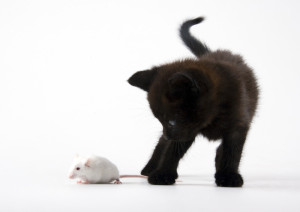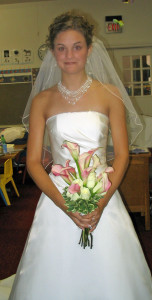Memoir is history. Your life is a microcosm of the world around you. People in the 20s did the Charleston dance, people in the 50s liked the twist. I was in college in the 70s and my boyfriend and I went to the disco to dance. Really? Long time ago! When you write a memoir you are writing history, history as experienced by a single person. Simply describing how you danced as a young person has historical perspective. Your life is played out against a backdrop of cultural and historical detail.
The history of the United States is pockmarked with racial tension. I had an experience when I was in high school in the early 70s that tells of my own brush with ugly racism. My hometown Quincy, Illinois has a fascinating history. Dr. Richard Eells, who was a staunch abolitionist, built his home in Quincy in 1835 and sheltered runaway slaves on their way to Chicago. His home became a major stop on the Underground Railroad. Fast forward to 1973.
Black and White?
I ducked into my classroom cheeks still red. My friends looked askance, a black girl glared and the white guys looked away. What had I done? Tony asked if he could share my locker and I said yes. Why not? He was cute, curly black hair, chiseled features, tall, handsome… and black. I was white, it was the early 70s. My daughter’s high school in 2008 was free of the social stigma of mixed race dating. Her high school had a healthy mix of blacks, whites, foreign exchange students from all corners of the world and there was an easy acceptance that was sadly lacking in my high school.
Tony and I engaged in the curious custom that marked the half hour before the first class of the day. Our school had long hallways that circled the building and kids walked along those halls before school started. We didn’t just hang out in groups. We walked. Groups mixed and evolved in the easy fluid movements of packs of walking kids, couples emerged, note was taken of who was with who, and who was with someone different than the day before, who was alone. Tony and I walked together, turned heads, broke the social mores of a time in US history not that distant from the civil unrest of the 60s.
He called me in the evenings and I loved our conversations. He described his family, large and rowdy, 3 sisters and 2 brothers. He often took the phone as far as the cord would allow so he could sit under the steps by the wall phone in his kitchen. I could hear feet shuffling above and voices drifting down. The small space beneath the steps gave him a semblance of privacy. I talked up in my parent’s bedroom. The phone was on top of my mom’s dresser, curly aqua cord entwined through my fingers. I loved the sound of Tony’s voice and listened as I watched a bird in the pin oak outside the window. Branches tapped on the window, dusty green leaves rustled in the wind as Tony’s voice; sensitive and sweet, spoke to me. I felt alive. Those conversations were a welcome respite for both of us, innocent, punctuated by silences that vibrated with what we left unsaid. I felt understood as he listened to whatever was troubling me at the time. The difference in our skin colors was not a factor.
But in the morning when we started to walk the halls of our high school our skin color set us apart. We walked together, we were a couple. The crowd parted, my friends shot me warning glances, his friends were more tolerant, smiled our way, some of the black girls made me uncomfortable as they shunned me with cold glares.
Our town Quincy, Illinois is on the Mississippi River in mid-state Illinois and has a colorful history. The town square has a statue commemorating the Lincoln Douglas debate that took place there in 1858. Quincy was the first Underground Railway station across the border from Missouri, a slave state. With that history of racial tolerance, how ironic that more than a century later, racial drama would swirl around me in the halls of Quincy High School.
One day I found a knife in my locker. Tony said not to worry, ignore it; it had nothing to do with me. Racial tension was high. I knew I should tell someone, it was my locker, I could get in trouble. Tony wouldn’t tell me what was going on. The next morning there was a fight in the school courtyard, the white kids and the black kids faced off. Violent shuffling knocked kids off their feet, shoving, nasty taunts, a few punches flew. Police were called and a few guys were hauled off, still kicking and yelling. Ugly racial slurs polluted the air. The rest of the day was tense and an eerie quiet descended on the hallways as kids went from class to class, heads down, nervous, skittish. The next day many parents kept their kids at home, uneasy about the fights. I went to school but got there late and went straight to class. The early morning ritual had been suspended as the atmosphere, usually carefree and fun had turned sullen and suspicious. The knife was gone. Tony was gone.
A week later our phone calls resumed, the early morning walks resumed, school achieved a semblance of normalcy. One evening I was on the phone, looking out the upstairs window, the oak leaves were turning russet and stubbornly clung to the branches as bright maple leaves flew through a brisk breeze. Tony’s voice took a new tone. He asked when we were going out, could we go to a movie soon? I paused. I faltered. I said I had to go. Conversation over.
Why couldn’t things stay the same? I loved our walks, liked being somewhat of a renegade as we shook up social mores and expectations, loved seeing a few other mixed couples start to walk with us. Our phone conversations continued. Tony shared about his mom’s anguish when his brother ran away from home. He felt understood. Why couldn’t things stay the same? He wanted more, he wanted to go out on a date. Somehow in my mind that was a step I just couldn’t take. I am deeply ashamed of that time in my life when I kept putting Tony off, making up excuses.
One night as we were talking, the dark came quickly, a few hard pellets of snow pinged off the window in a blowing gale. My breath fogged the window panes, my words came forth unbidden. No. I couldn’t go out. The patch of frost melted as my breath came in spurts and I said the one thing that changed everything, “If I go out with you the white guys won’t ask me out anymore.” Tony grew quiet. He mumbled something and hung up. I think of my words, my coward heart and cringe. The hurt in Tony’s voice haunted me. Tony quit calling. I was confused and sad. Only later I would realize that if a white guy wouldn’t go out with me after I finished dating a black guy, then he wasn’t worth it anyway. His bigotry would brand him unfit to date.
I missed those walks, I missed the beauty of our fingers intertwined, the shine of his mahogany skin contrasted black with white. I missed his voice. I tell myself I am not that person, that 16-year-old girl with a troubled heart, the white girl who missed her black boyfriend, the girl who was brave enough to push against the bigotry of her time… but not quite brave enough.



















